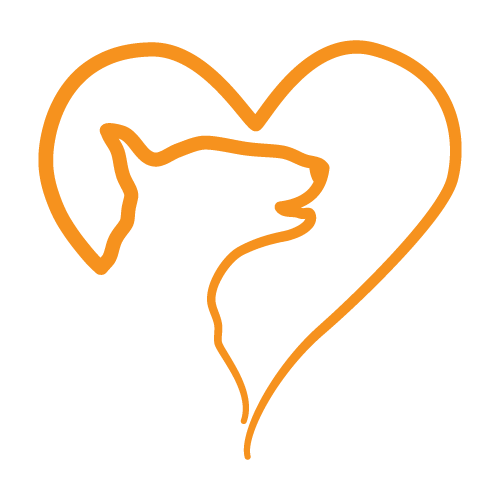Silent communications - what your dog is telling you
I was thinking the other day, while observing my dogs doing their best to gain my attention that their tummies were empty, that they can tell us a lot of what they are feeling by talking silently with us. They speak dog, we speak whatever our normal language is. Yet we can understand each other. That’s so cool, it blows my mind whenever I think about it.
BODY LANGUAGE
When they want a walk, they’ll converge wherever me or Kirsty happen to be and Hattie Happypants does a little dance with her front feet, and Ren might stare intently at us, maybe whine a little, and focus a lot of eye contact on us. They might get excited if we move to the living room door as their harnesses are in the hallway, they may headbutt the door (Hattie is the tank), Ren might leap at the door if we go through it without inviting them. They may even stare out of the backdoor, or sometimes jump up on my desk if I’m working.
Walk me now human!
When it’s meal time they might hang out in the kitchen next to the feed box. They might nudge it and stare at us. All excellent use of their learned skills at gaining our attention to see to their needs. They often use them eyebrow muscles and give the cute puppy eyes. All without speaking a word, just body language. Did you know they’ve evolved those eye muscles specifically to train us humans (Kaminski et al, 2019)? How cool is that!
Us humans use body language too, often without realising what we are doing, and sometimes confuse a dog acting guilty when we confront them over chewing through their shoes, when actually they are responding to our perceived threatening body language and maybe the tone of our voice, and are trying to appease us.
ALL ANIMALS CAN TALK
Most animals communicate through body language! You might have noticed your horse act differently around you depending on your mood - they’re really good at reading us too, not just dogs (Smith et al, 2017). Or cat might hold back from interacting with you and rotate their ears, or even walk off with their tail in the air if you act unpredictably in front of them.
I bet you’ve seen a tail wagging on a dog! Even if you don’t live with a dog, you’ve probably seen it somewhere. It might surprise you to know a wagging tail can be barometer of mood; they don’t always wag because they are happy or friendly. Sometimes, that tail wag can mean they are using it for balance during activity, or to say hey I’m scared go away, play with me or I’m really annoyed F OFF (Handelman, 2008)!
Camera too close or tasty stuff close by?
AVOIDING SOCIAL CONFLICT
Have you been in a situation where you thought something they did had no warning? Like maybe when someone went to pet them, or at the vets, or on a walk and a puppy came running up to them. Dogs and other pets do warn, we don’t always recognise it though. As with anything our dogs do, we need to look at the context, like the vets. Our Kirsty being a vet nurse and daughter of a behaviourist, is really good at spotting subtle signals that a dog is feeling uncomfortable.
She said to me the other day that one of the receptionists had gone to pet a dog who bared it’s teeth at her and growled and she was shocked, because she hadn’t noted the dog turning his face away from her, licking his lips and leaning into his owner right before she bent over him. He did warn, just in dog language not English. I’d bet my gin you’ve been in similar situations! So Kirsty is now gathering photo and video evidence of pets in the practice, who are giving signals of warnings and discomfort and will use this to help train the staff on what to look for to avoid a negative situation, Cool huh!
I CAN HELP YOU!
And I really help you learn to speak dog or cat too, it’s so cool that we can talk to each other without speaking and avoid conflict with a species that can never talk like us. Keeps us safe and happy and them too. There’s some ace info out there, but some of its is conflicting or outdated, so get in touch, tell me your story and what body language you’ve noticed and I’ll help you.
If you like this, let me know, share with your buddies and hit the subscribe button!
Touch the tummy or admire with eyes?
References:
Handelman, B., 2008. Canine Behavior: A photo illustrated handbook. 1st ed. Wenatchee, WA: Dogwise, pp.38-44.
Kaminski, J., Waller, B., Diogo, R., Hartstone-Rose, A. and Burrows, A., 2019. Evolution of facial muscle anatomy in dogs. Proceedings of the National Academy of Sciences, [online] 116(29), pp.14677-14681. Available at: <https://www.pnas.org/content/116/29/14677> [Accessed 30 August 2020].
Smith, A., Wilson, C., McComb, K. and Proops, L., 2017. Domestic horses (Equus caballus) prefer to approach humans displaying a submissive body posture rather than a dominant body posture. Animal Cognition, [online] 21(2), pp.307-312. Available at: <https://link.springer.com/article/10.1007/s10071-017-1140-4> [Accessed 30 August 2020].



